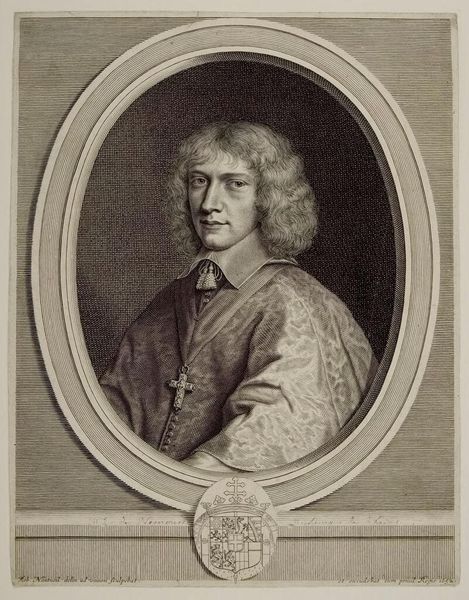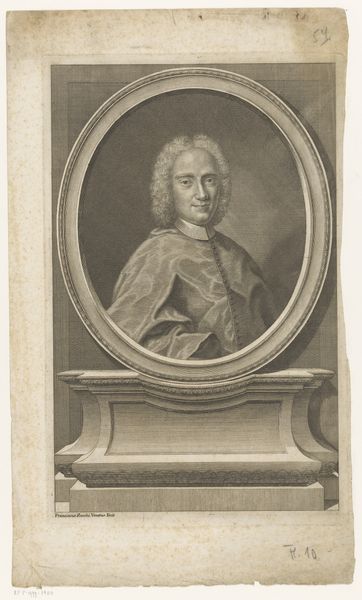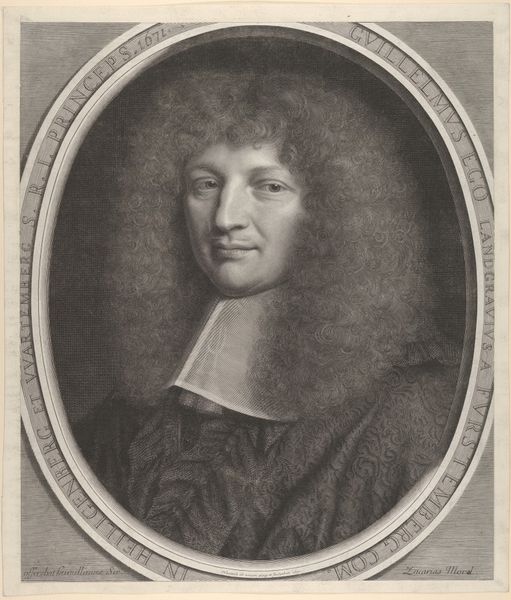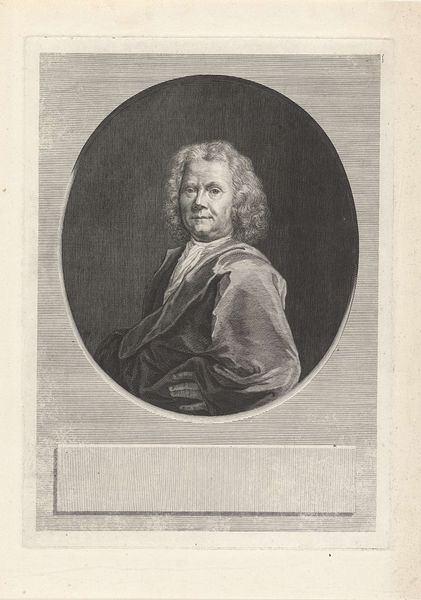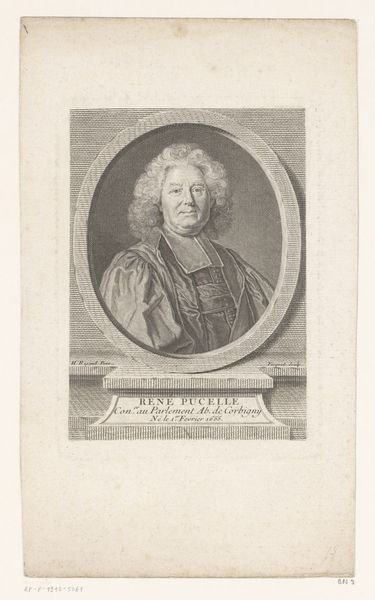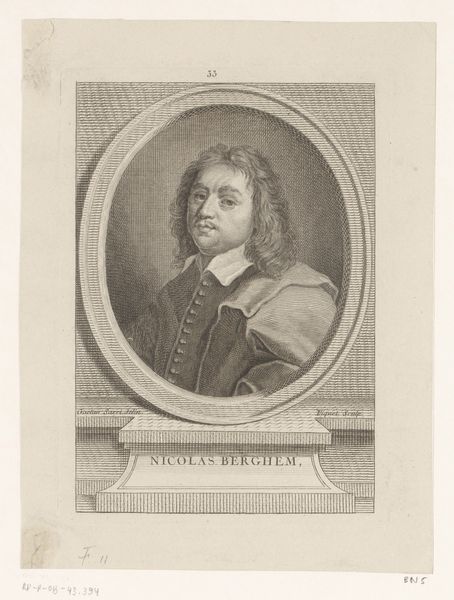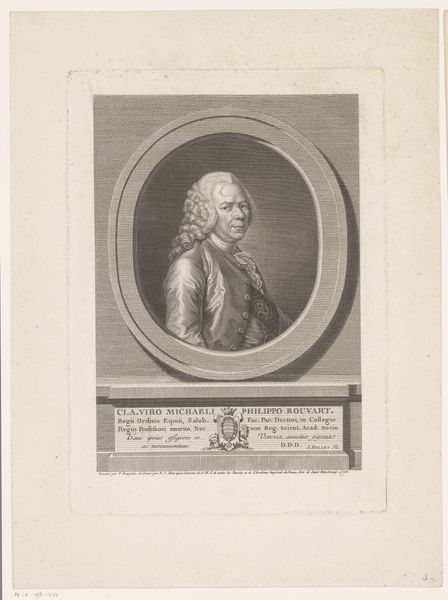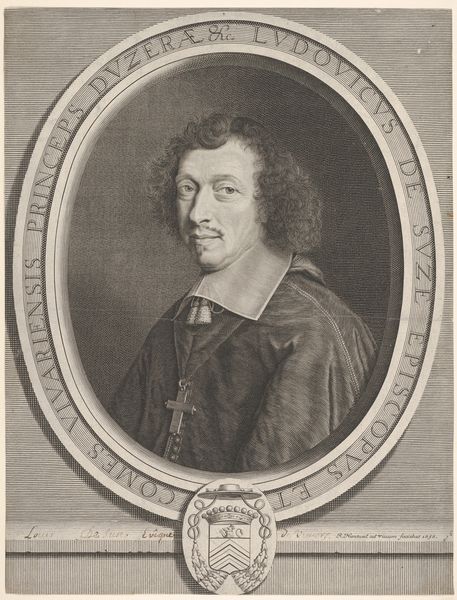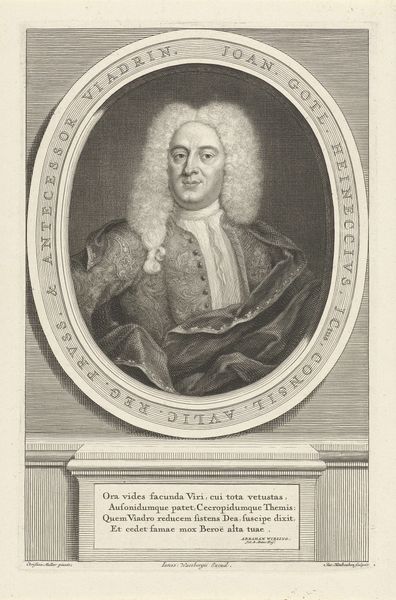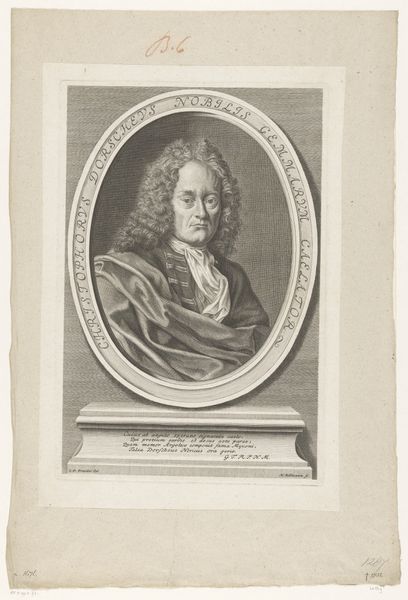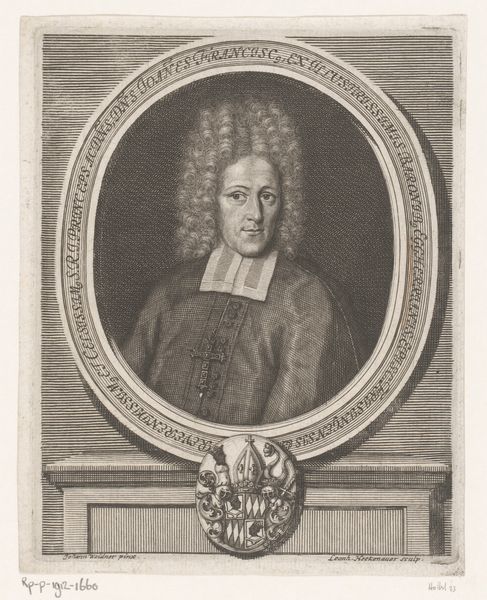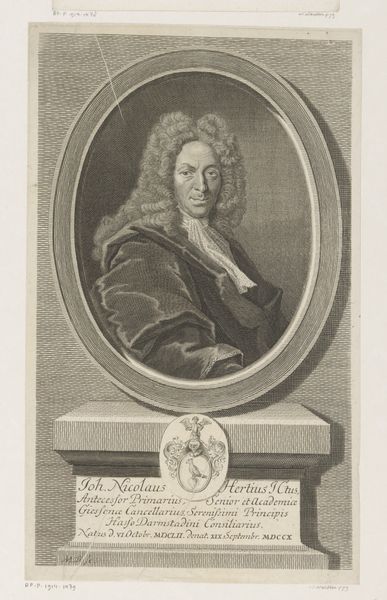
drawing, print, engraving
#
portrait
#
drawing
#
baroque
# print
#
old engraving style
#
men
#
engraving
#
columned text
Dimensions: Sheet: 17 1/2 × 13 3/4 in. (44.5 × 34.9 cm) Plate: 12 5/8 × 9 13/16 in. (32 × 25 cm)
Copyright: Public Domain
Curator: Standing before us is Robert Nanteuil’s portrait of Henri II de Savoie, created between 1646 and 1656. This engraving, a jewel of the Baroque, captures the prelate within an oval frame, surrounded by an ornate inscription. Editor: It possesses a delicate quality. The soft gradations of tone achieve a remarkable realism despite being monochromatic and executed on a relatively flat plane. It has a surprisingly gentle feeling for a formal portrait. Curator: Absolutely, and it’s important to consider Nanteuil's process. He was a master of engraving, using a burin to meticulously create these lines. The print medium made such imagery far more accessible and broadly distributed, thus standardizing perceptions of Henri’s image. Editor: I’m struck by the interplay of textures and shapes. The precise rendering of Henri's lace collar against the smooth, rounded face—it’s a fascinating contrast, drawing the eye. Even within the limited tonal range, Nanteuil coaxes an evocative richness. Curator: Right. Note also the status conveyed by clothing and the inscription that declares Henri II as the Archbishop of Reims. This position afforded him political influence and great authority as he served as a Peer of France. This work illustrates power structures of the time, showing the close alliance of church, nobility, and political leadership. Editor: Agreed, but let’s also appreciate the subtle mastery over line and composition; those elegantly cascading curls against the firmness of the facial structure, so cleverly conceived! Even if devoid of cultural understanding, it holds aesthetic weight. Curator: Indeed. Nanteuil’s technical skill enabled the widespread visual articulation of French society's hierarchy, reaching consumers in many forms: as single-sheet prints, bound into books, or as keepsakes exchanged among the elites. Editor: Ultimately, Nanteuil presents a formal yet refined interpretation, its structural balance and tonal unity a captivating testament to the power of observation and careful formal articulation. Curator: It offers an intimate perspective into a highly controlled construction of identity and power in 17th-century France, providing key insights into cultural and political values.
Comments
No comments
Be the first to comment and join the conversation on the ultimate creative platform.
